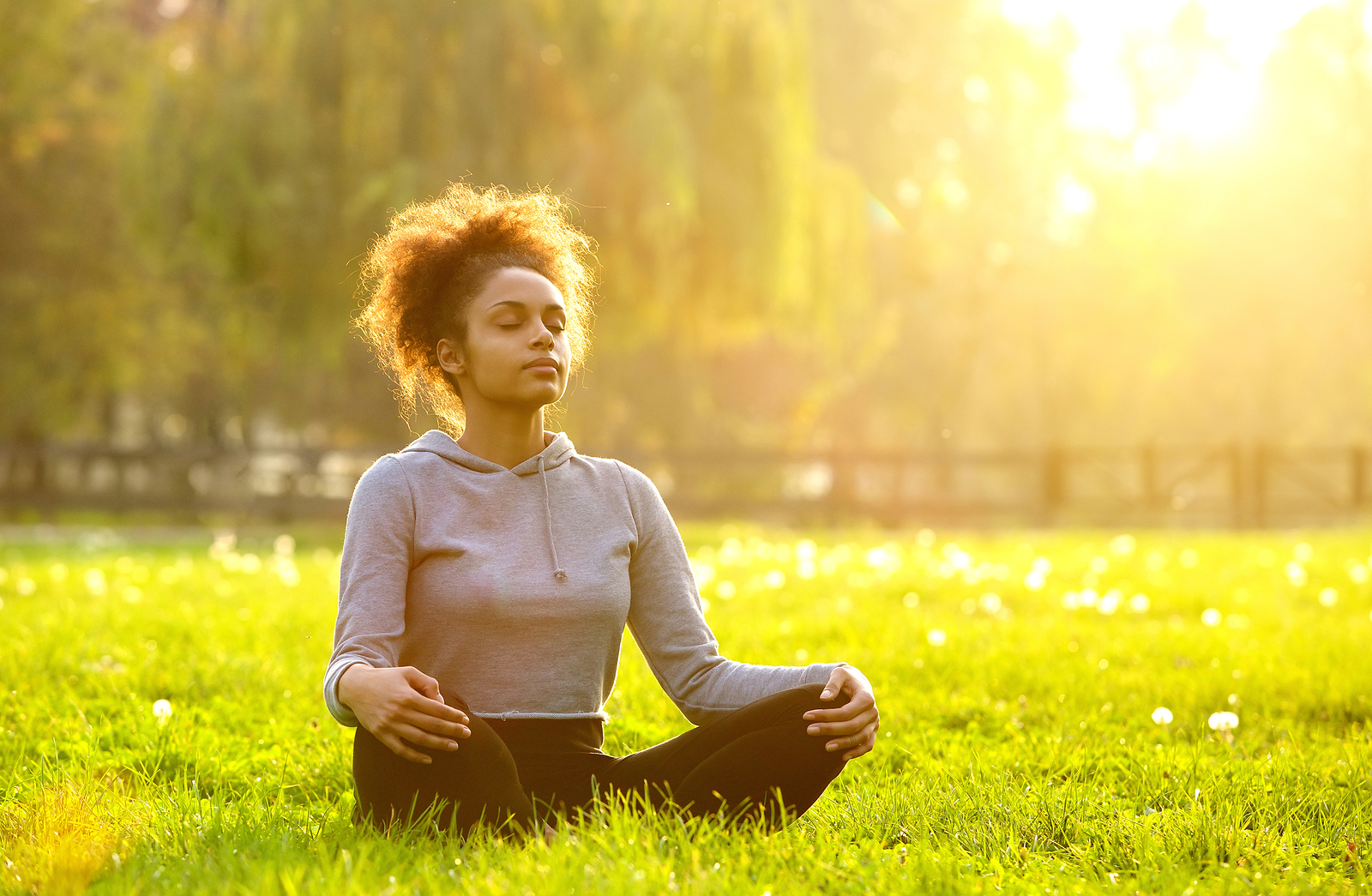In today’s online world, where everyone seems to be tweeting or updating their status every second of the day, the idea of simply sitting and clearing your mind of all the useless clutter in a quest for peace and clarity may seem strange. And, for some, impossible.
But that is the goal of meditation in yoga, to achieve a state of peace and serenity through quiet introspection. To accomplish this requires the practitioner to be in complete control of their mind. Many people may believe they can easily achieve this state of calmness, but actually attempting meditation can prove to them how difficult it actually is.
Anyone engaging in meditation for the first time – even the 10th time – soon realizes that meditation isn’t easy. Despite the serenity it will eventually bring, teaching your mind to relax and clear itself is a process with important steps and milestones along the way. And one of the most important steps is breathing. By learning to breath in a controlled manner, a yoga practitioner can control their life force, or “prana”, increasing it or decreasing it to bring themselves into a sense of balance, which will ease the transition into a meditative state.
By learning to breath in a controlled manner, a yoga practitioner can control their life force, or “prana”, increasing it or decreasing it to bring themselves into a sense of balance, which will ease the transition into a meditative state.
The life force, or prana, moves throughout the body along channels known as “nadis”. The sushumma nadis runs along the spine, while the pinngala and ida nadis run on either side of the sushumma. The prana runs along these paths and is propelled by the student’s breathing, thoughts and emotions. The way you breathe controls the direction of the flow of prana and facilitates the process of meditation.
With that in mind, the first step in meditating in yoga is to become aware of yourself, of your body and your mind. Begin by lying on your back on the floor or a bed with your arms at your sides and your legs stretched out. Try to become aware of all of the things around you and how your body reacts to these elements. With your eyes closed, feel your body’s weight, the weight of your arms and legs. Let your body sink into the floor and feel the different parts of your body come in contact with the floor.
Now try to gain an awareness of your body from top to bottom. Became aware of your body starting with your toes. Then move upwards along your legs, your knees, past your pelvis and on up to your back and shoulders. Become aware of your arms and your hands, your head. Become aware of any areas of tension, stress and discomfort. If you sense your muscles are tight in a particular area, make an effort to get them to relax.
Now focus on your spine, the area where the sushumma flows. Try to image the prana (life force) flowing through it. Become aware of it moving up your spine from the base of your spin to the top of your head. Imagine it flowing freely, carrying away all of your tension.
If there seems to be areas where it appears to be blocked or does not flow freely, imagine it being lifted away gently, taking your stress away as well. Lastly, become aware, once again, of your whole body and take note of the area that held tension or were significant to you for whatever reason. At this stage, your breathing should be slow, measured and calm. Notice how your breath is flowing in and out and notice whether it is smooth and relaxed or heavy and labored. Note whether you are breathing in an irregular pattern.
At this stage you should also take note of the thoughts in your mind. Your mind should be calm and clear, but if it isn’t, that’s OK. This does not mean you have failed at meditation, simply that you will have to practice more at meditation. Most people who attempt this for the first time find their thoughts are still turning to work or family issues. This is normal. After a while, you will be able to clear your mind and achieve a deeper level of meditation.
Become aware of the pattern of your heartbeat and how your body rises and falls with each breath. Each time, make a mental note of your emotions at the time and your state of mind. And conclude by becoming aware of your entire state: mind, body and spirit.
It may take some time before you can learn to completely relax, but as we have stated, meditation takes practice. Schedule regular times to practice meditation and learn to listen to your body and mind to reach a level of peach and harmony.




